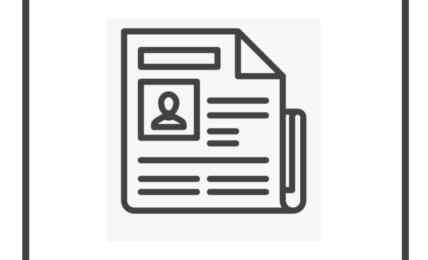By: Ilan Lavan, Business Development Director, ESGEnvironmental, social, and governance (ESG) criteria are a set of standards for a company’s operations that socially conscious investors use to screen potential investments. More & Cybersecurity at Findings
Your ESGEnvironmental, social, and governance (ESG) criteria are a set of standards for a company’s operations that socially conscious investors use to screen potential investments. More rating reflects your company’s exposure to environmentalEnvironmental criteria consider how a company performs as a steward of nature. More, socialSocial criteria examine how it manages relationships with employees, suppliers, customers, and the communities where it operates. More, and governanceGovernance deals with a company’s leadership, executive pay, audits, internal controls, and shareholder rights. More risks that have financial implications.
While only a few companies had committed to net-zero emissions two years back, sustainability pledges have come a long way since then. One-fifth of the largest companies in the world have made a net-zero emission pledge.
Here are three quick adjustments you can make to your ESGEnvironmental, social, and governance (ESG) criteria are a set of standards for a company’s operations that socially conscious investors use to screen potential investments. More plan to boost your rating and achieve ESGEnvironmental, social, and governance (ESG) criteria are a set of standards for a company’s operations that socially conscious investors use to screen potential investments. More efficiency.
Set a sustainability goal
One of the quick adjustments you can make is to set a net-zero carbon emission target. This will align your business with the world’s ESGEnvironmental, social, and governance (ESG) criteria are a set of standards for a company’s operations that socially conscious investors use to screen potential investments. More targets while positioning you alongside big companies such as Nike, J&J, and Apple, among others.
Everyone in the organization must be clear about the scope of the target and the action plans for achieving them.
Here are three steps you can take to accelerate your ESGEnvironmental, social, and governance (ESG) criteria are a set of standards for a company’s operations that socially conscious investors use to screen potential investments. More journey and boost your rating:
Measure current emissions – Assess your emission levels and identify areas to cut emissions. These can include investing in electric vehicles, switching from fossil fuels to renewable sources, adopting sustainable travel policies.Set short-term goals – The short-term targets help you understand how quickly you need to reduce your greenhouse gas emissions.Focus on reducing scope 1, 2, and 3 emissions -Net-zero, per SBTi, involves reducing scope 1 (direct emissions from owned sources) and scope two emissions (indirect emissions from energy purchased) to zero. While scope three assets are those that are not controlled or owned by the reporting organization, they indirectly contribute to the business value chain. To achieve your sustainability targets, you have to look at the entire supply chain.
Be transparent
In June of 2021, the House of Representatives passed legislation requiring public companies in the US to disclose their annual and quarterly ESGEnvironmental, social, and governance (ESG) criteria are a set of standards for a company’s operations that socially conscious investors use to screen potential investments. More metrics. With ongoing efforts from governments, regulators, and forums worldwide, globally uniform ESGEnvironmental, social, and governance (ESG) criteria are a set of standards for a company’s operations that socially conscious investors use to screen potential investments. More disclosure standards may soon become a reality.
Apart from regulators, businesses face increasing demand from investors, rating agencies, and the general public to provide more information on their sustainability measures.
Investors, asset managers, and stakeholders rely on “decision-useful disclosures” to better understand the climate risks and make intelligent investing decisions.
Generate to calculate quantitative disclosures involving metrics on carbon emissions, climate change impact on business finances, and status of progress on climate-linked goals. Qualitative disclosures can include how the leadership handles climate-related opportunities and risks and how they shape its strategy. According to Chairman of SEC, Gary Gensler, standardized mandatory disclosures may pave the way for consistency, clarity, and comparability of ESGEnvironmental, social, and governance (ESG) criteria are a set of standards for a company’s operations that socially conscious investors use to screen potential investments. More reports.
Agile companies that hold themselves accountable to investors and customers by stepping up their transparency on ESGEnvironmental, social, and governance (ESG) criteria are a set of standards for a company’s operations that socially conscious investors use to screen potential investments. More will not only boost their rating but be more valuable.
Here are the best practices for ESGEnvironmental, social, and governance (ESG) criteria are a set of standards for a company’s operations that socially conscious investors use to screen potential investments. More reporting:
Determine the target recipient of your ESGEnvironmental, social, and governance (ESG) criteria are a set of standards for a company’s operations that socially conscious investors use to screen potential investments. More reports – investors, regulators, or other stakeholdersLiaise with concerned departments within the company to gather relevant information, inputs, and diverse perspectivesDetermine which ESGEnvironmental, social, and governance (ESG) criteria are a set of standards for a company’s operations that socially conscious investors use to screen potential investments. More metrics and factors are relevant to your business and are meaningful to your stakeholdersClearly define technical terms and metrics usedFocus on risks and opportunities that impact your business’s long-term financial and operational performance Ensure ESGEnvironmental, social, and governance (ESG) criteria are a set of standards for a company’s operations that socially conscious investors use to screen potential investments. More information is easy to find through dedicated disclosure pages and links
Automate ESGEnvironmental, social, and governance (ESG) criteria are a set of standards for a company’s operations that socially conscious investors use to screen potential investments. More assessment
An automated assessment platformhelps your business turn your ESGEnvironmental, social, and governance (ESG) criteria are a set of standards for a company’s operations that socially conscious investors use to screen potential investments. More intentions into a reality. Apart from handling a significant part of your ESGEnvironmental, social, and governance (ESG) criteria are a set of standards for a company’s operations that socially conscious investors use to screen potential investments. More workload, automation tools offer tools for calculating greenhouse gas emissions, generating disclosures, risk reports, and climate risk analytics.
A comprehensive automated assessment platform gathers ESGEnvironmental, social, and governance (ESG) criteria are a set of standards for a company’s operations that socially conscious investors use to screen potential investments. More data from across the assets and portfolios of your company. You can then use the tool to characterize the data, select standards, develop custom KPIs and metrics.
When you automate ESGEnvironmental, social, and governance (ESG) criteria are a set of standards for a company’s operations that socially conscious investors use to screen potential investments. More assessment, you can better:
Identify ESGEnvironmental, social, and governance (ESG) criteria are a set of standards for a company’s operations that socially conscious investors use to screen potential investments. More opportunities and risks that impact your business model, fixed assets, and supply chainReduce transaction time and costs by quickly identifying potential ESGEnvironmental, social, and governance (ESG) criteria are a set of standards for a company’s operations that socially conscious investors use to screen potential investments. More issues.Track progress of your ESGEnvironmental, social, and governance (ESG) criteria are a set of standards for a company’s operations that socially conscious investors use to screen potential investments. More Program.Identify opportunities to make ESGEnvironmental, social, and governance (ESG) criteria are a set of standards for a company’s operations that socially conscious investors use to screen potential investments. More improvements and achieve potential cost savings early on.Streamline ESGEnvironmental, social, and governance (ESG) criteria are a set of standards for a company’s operations that socially conscious investors use to screen potential investments. More reporting to attract investors
Conclusion
Sustainability plays a central role in an organization’s revenue, reputation, and competitive edge; quick adjustments such as committing to net zero, improving reporting, and investing in automation help your business boost your ratings.
One of the most effortless adjustments you can make is implementing automation to catch problems early on and make smarter and faster decisions while ensuring ESGEnvironmental, social, and governance (ESG) criteria are a set of standards for a company’s operations that socially conscious investors use to screen potential investments. More compliance.
The post Guest Post: Three Quick Adjustments to Your ESG Plan That Would Boost Your Rating appeared first on ESG Today.


